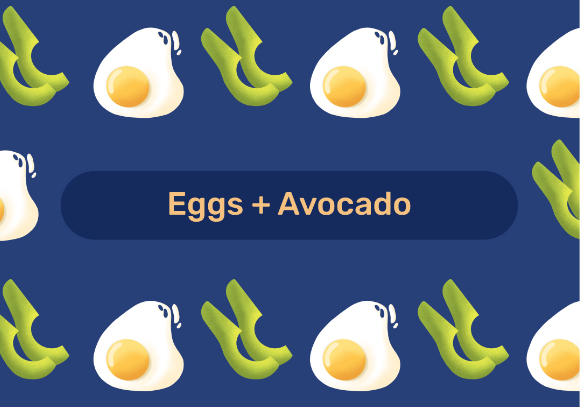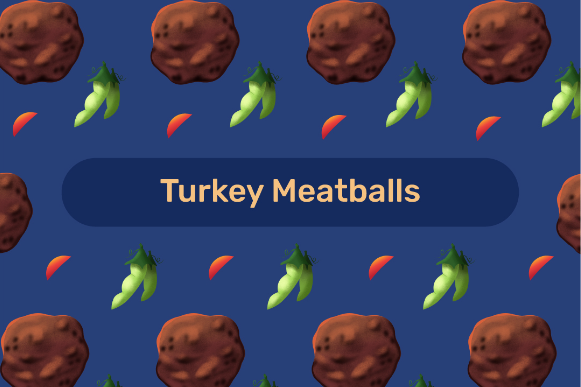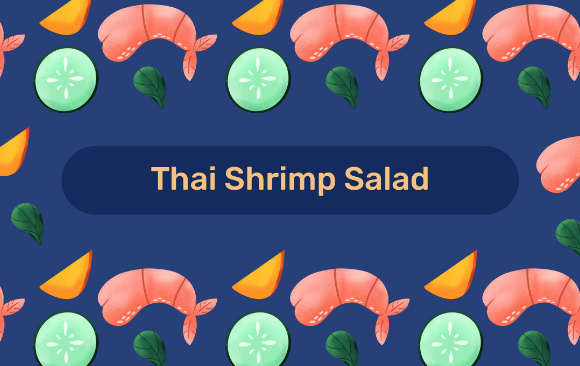You’re watching your timer, the seconds slowly ticking by, the circle inching closer to closed. Your fast is nearing its end and logically, you’re fantasizing over daydreams of french fries and apple pies. The moment arrives: your timer turns green and… what do you do?
What you choose for your #FastBreaker meal is arguably your most important nutritional moment, especially after a prolonged period without food. You can either boost the benefits of your fast, or unravel them almost entirely, simply by what you choose to eat in the first moments of your feeding window. So before you dig in, let’s consider how your choices might impact your progress.
Go Slow
No matter what kind of fast you’ve done, whether it’s a 16:8 or a multi-day fast, your safest bet is to ease back into eating so you don’t overwhelm your digestive system. A loaded cheeseburger might sound fantastic, but it probably won’t feel fantastic going down.
After a prolonged fast, one expert recommends you halve the number of days you fasted and use that as a guide for reintroducing foods. So, after a four-day fast, for example, take two days to ease back into your “normal” routine.
Start simple. Broth, bouillon, and other low-sugar liquids are great for the first meal. Sugar can cause bloating, irritation, and massive blood sugar spikes, so definitely keep it to a minimum—which means steer clear of juice and soda.
You’ll also want to drink plenty of water. It’s pretty common to become dehydrated while fasting. If you lost weight during your fast, you should expect to gain back a certain amount of water weight as you you start eating carbs again and your glycogen stores replenish, flooding your muscles and liver with extra H2O.
So don’t be afraid of the numbers on the scale—if you’re eating mindfully, the weight you gain back in the first days following a fast is “good” weight.
Gradually Introduce Foods
As we mentioned above, sugar can spike your blood sugar, but so can other processed, high-GI carbohydrates. So you’ll want to choose foods that are low on the glycemic index or avoid carbs entirely for the first day or two. One fasting expert recommends eggs, avocado, nuts and spinach as good high-quality, low-carb whole foods to introduce first.
If you start craving sugar again after a fast and just need something to sate your sweet tooth, opt for lower GI fruits like pears, grapefruit and berries, particularly if you’re fasting to balance your blood sugar. Even “natural” sugars can negatively impact insulin sensitivity if you consume too much.
Another nutrition expert recommends that you start with soft-cooked foods so they’re easier to digest. Especially after a long fast, it’ll take a minute for your digestive enzymes to kick into gear, so you’ll want to help them out a bit. That means steamed or sautéed vegetables might be better than raw ones, at least in the early hours after a fast. Add in whole grains and high fiber sparingly at first to avoid constipation. Add in raw foods and cruciferous veggies last to avoid irritating your digestive tract. Don’t get us wrong—there are plenty of benefits to raw foods—vitamins, antioxidants, prebiotic fiber…they just might not be the easiest foods to eat right away.
Keep Servings Small
When transitioning off a prolonged fast, it may be better to start with small servings – around 500 calories or less per meal. Transitioning slowly out of caloric deficit will help your body adapt. This is especially true the longer you go without food.
People who go an extraordinary time without eating—usually 10 days or more—or those who are malnourished prior to a fast, can be at risk for a condition called “refeeding syndrome.” This potentially fatal condition occurs due to shifts in fluids and electrolytes when macronutrients are introduced too rapidly back into the body. As long as you are in good health going into your fast, transition slowly back to your normal diet, and are under the care of a health professional before, during, and after fasting, this is unlikely to occur.
Plan Your Food Before Your Fast
To avoid overeating, plan your #fastbreaker meal before even beginning your fast. It’s kind of like how you don’t want to shop on an empty stomach – make all your food decisions when you aren’t hungry so hunger doesn’t drive your choices. For a longer fast, you may even want to map out your full week of post-fast meals. Knowing what and how much you will be eating will help reduce your risk of binge eating and choosing poor quality foods. Meal planning apps and meal kits are great tools to help with this.
Other Considerations
Protein
During a fast, you suppress growth pathways such IGF-1 and mTOR. Suppressing those pathways is part of what triggers autophagy, which is a good thing if you’re fasting for longevity. After the fast, however, you’ll want to start repairing and rebuilding, so it’s a good idea to get those pathways up and running again. That means protein. No need to start slamming protein shakes! After all, we want smaller portion sizes to start with, but some scrambled eggs or a few ounces of lean meat like chicken or fish would be a smart choice for essential amino acids.
Chewing
Your digestive enzymes are basically hibernating during a fast, so go easy on your stomach to start. While smaller portion sizes help with this, you can also do your stomach a favor by chewing thoroughly. That way you’ll start the digestive process early, before the food even gets to your gut. One expert recommends chewing your food as many as 30 times per bite to structurally breakdown those nutrients and activate digestive enzymes in your mouth.
Overall Nutrition
Preparing thoughtfully for your first meal after a fast is a great first step to thinking about your second, third, and fourth meal too. If fasting is your only answer to getting healthier, but you don’t eat well the rest of the time, you’re unlikely to see the results you want.
Post Fast Meal Suggestions
Snack on these #FastBreakers:
You’ll want to have smaller fast breaker meals if you’ve completed a multi-day fast. Your first couple of snacks might be:
- Bone broth
- A hard boiled egg
- Some avocado slices
If you’re practicing time-restricted feeding (TRF) or one meal a day (OMAD), here are some great options for your first meal post fast:

- Cook wild rice
- Soak 1 cup wild rice overnight in a bowl of water or at least a minimum of 4 hours. This will help speed up cooking time and reduce phytic acid content.
- Drain the rice and add to a pot with 2 ¼ cup bone broth and 1 tsp. avocado oil.
- Bring the mixture to a boil and then reduce heat to medium and cook until all the water is absorbed (~30 minutes).
- Season with your favorite herbs and spices!
- Fry eggs
- While the rice is cooking, heat 1-2 tsp. avocado oil in a skillet to low-medium heat.
- Once the oil is hot, add the eggs and cook to desired temperature. For over easy, cook time is about 3 minutes. For over hard, cook time is closer to 5-6 minutes.
- While the eggs are cooking, add salt and pepper to taste
- Slice avocado
- Add the wild rice to a bowl, top with the fried eggs and finish with sliced avocado on top. For an additional garnish, try adding chopped chives on top!

- Prepare the meatballs
- Here’s what you’ll need:
- 1/2 cup minced white onion
- 1/2 cup fresh parsley
- 2 mined garlic cloves
- 1/2 tsp. dried basil
- 1/2 tsp. dried thyme
- 1/2 tsp. sale
- 1/2 tsp. pepper
- 2 lbs. organic ground turkey
- 1/2 lb. organic, preservative-free bacon, diced
- 1 egg yolk
- 2 tbsp. coconut oil, melted
- Dice and mince the above ingredients and add to a large bowl to mix.
- Once all the ingredients are incorporated, take about 1 Tbsp. of the mixture at a time and roll into a ball.
- Add 1 Tbsp. avocado oil to a skillet, heat on medium high heat and add the meatballs. Cook for a few minutes until all sides are brown.
- Transfer the browned meatballs to a baking sheet and place in a pre-heated oven to 350 degrees Fahrenheit.
- Cook the meatballs about 15-20 minutes until cooked thoroughly.
- Plate the meatballs and add a paleo friendly tomato sauce. Either this brand or this recipe can be an option.
- Here’s what you’ll need:
- Prepare the green beans
- Boil a pot of water and add a pinch of salt.
- Once the water is boiling, add the green beans.
- Cook the green beans for about 2 minutes then drain.
- While the green beans are boiling, mince 2 cloves of garlic, zest a lemon and slice ¼ cup almonds (or purchase pre-sliced).
- Add 1 Tbsp. coconut oil to a large skillet and turn on low to medium heat.
- Add the garlic and almonds to the skillet and cook for about 2 minutes.
- Add the green beans and sauté another 2-3 minutes while adding salt and pepper to taste.
- Transfer to a serving platter and sprinkle with lemon zest (more or less based on your taste preferences).
- Plate the meatballs and green beans

- Prepare the raw ingredients
- Chop 3 cups romaine lettuce
- Shred ¼ cup carrots
- Dice ½ cup orange bell pepper
- Dice ½ cup red bell pepper
- Slice ½ cup red cabbage
- Chop ¼ cup macadamia nuts
- Dice ¼th of a mango
- Chop ⅛ cup fresh cilantro
- Sauté the veggies
- Add coconut oil to skillet on low-medium heat
- Add veggies and cook for 2-3 minutes
- Sauté the shrimp
- Add 1 tsp. coconut oil to a skillet and heat to low-medium heat.
- Once heated, add 4 oz. raw shrimp.
- Cook on both sides until the inside of the shrimp is white (about 4-5 minutes).
- Make the salad dressing (large batch, use ~4 Tbsp.)
- Add ingredients to a blender and blend until smooth:
- 1 can full fat coconut milk
- ¼ cup creamy almond butter
- ¼ cup olive oil
- 1 Tbsp. yellow curry powder
- 1 garlic clove
- Juice of one lime
- 1-2 tsp. sugar-free chili sauce
- 1 tsp. salt
- Add ingredients to a blender and blend until smooth:
- Combine all ingredients, toss to mix, and enjoy!
Don’t forget to use #FastBreaker and tag @zerofasting when you share any of these delicious recipes!
- The Complete Guide to Fat Burning - April 30, 2024
- Zero Live #4: 3 Ways to Boost Fat Burning - March 28, 2024
- Zero Live #3: Nutrition, Fast Breakers, and Fasting - March 11, 2024






I love the egg and avocado! My favorite foods and easy to prepare. I need quick and easy for my fast breakers. I also love-love bean tacos with avocado, tomato, baby spinach and my secret weapon—a dollop of bleu cheese dressing. I will get back to this. Thanks. I do (16:8) TRF and invariably it has turned into OMAD because I get full so fast. I’m still trying to find the best way to eat. This is a process of discovery for me. I truly appreciate the meal advice. Thank you.
Very helpful, thank you. I started the 20hours fast yesterday, and i broke it by eating white rice and tomatoes sauce, and some minutes later with 2 slice of bread and a cup of hot coffee with milk and sugar. Is that okay or not?
Nope, it’s not. According to this article you should avoid high GI carbs at first meals (like white rice or bread) and aim for protein and healthy fats (eggs, avocado, nuts, seeds, spinach, vegetables [rather not raw, but prepared])
Hopefully it helps 🙂
Excited to try these recipes. Thanks so much.
These foods sll sound SO delicious, can’t wait to try them! I have been doing (16/8) IF. Usually break my fast with eggs & salad. Just coming off a 72 hour fast tonight. Can i break my fast with one of these meals or do I need to go lighter, as in just broth & one egg?
Do you have any meal suggestions for someone who is doing 18:6 fasting but is also vegetarian/vegan?